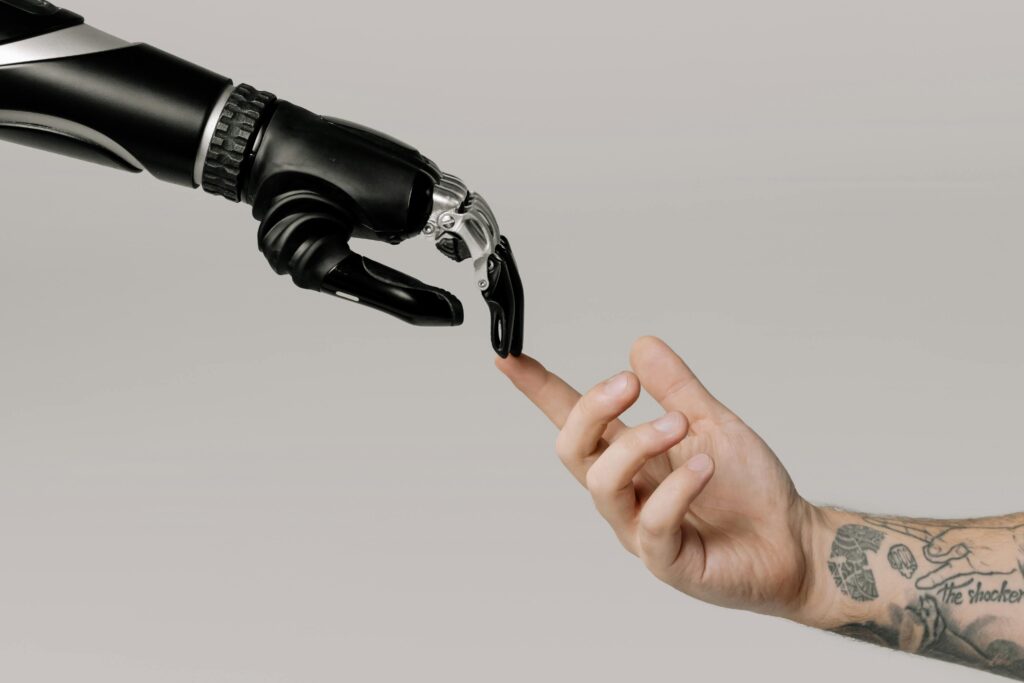In today’s fast-paced digital landscape, the integration of artificial intelligence (AI) in user experience (UX) design has become a game-changer. AI technologies are revolutionizing the way designers create and optimize user interfaces to enhance user interactions and overall user satisfaction.
By leveraging AI tools and techniques, UX designers can streamline processes, gather valuable insights, and deliver personalized experiences that cater to the unique needs of users. This article explores the significant impact of AI on UX design strategies and highlights the top 10 jobs in this evolving field.
1. AI-Powered User Research Analyst
AI has transformed the way user research is conducted in the field of UX design. AI-powered tools can analyze user behavior, preferences, and feedback to provide valuable insights that inform design decisions. User research analysts leverage AI algorithms to gather and interpret data, identify patterns, and uncover user needs and pain points.
By integrating AI into user research processes, designers can create more user-centric and data-driven designs that resonate with their target audience.
2. AI-Driven Interaction Designer
Interaction designers play a crucial role in shaping the way users engage with digital products and services. AI technologies enable interaction designers to create dynamic and responsive interfaces that adapt to user inputs and preferences.
By incorporating AI-powered chatbots, voice assistants, and predictive algorithms, interaction designers can design seamless and intuitive user experiences that anticipate user needs and provide personalized interactions. AI-driven interaction designers are at the forefront of designing innovative and engaging user interfaces that enhance user satisfaction and drive business growth.
3. AI-Enhanced Information Architect
Information architecture is the foundation of a successful UX design strategy, as it defines the structure and organization of content within a digital product or service. AI-enhanced information architects leverage machine learning algorithms to analyze content, categorize information, and recommend optimal navigation paths for users.
By harnessing the power of AI, information architects can create intuitive and user-friendly navigation systems that help users find information quickly and easily. AI-enhanced information architects are instrumental in designing cohesive and organized digital experiences that improve user engagement and retention.
4. AI-Infused Visual Designer
Visual designers are responsible for creating visually appealing and aesthetically pleasing designs that communicate brand identity and messaging effectively. AI-infused visual designers leverage AI technologies to automate repetitive design tasks, generate design variations, and optimize visual elements based on user preferences.
By using AI-powered tools such as generative design systems and style transfer algorithms, visual designers can explore creative possibilities, experiment with design concepts, and produce high-quality visuals at scale. AI-infused visual designers are at the forefront of designing visually stunning and engaging user interfaces that captivate users and enhance brand perception.
5. AI-Driven Usability Tester
Usability testing is a critical phase in the UX design process, as it allows designers to evaluate the effectiveness and efficiency of a digital product or service from the user’s perspective. AI-driven usability testers use machine learning algorithms to conduct automated usability tests, analyze user interactions, and identify usability issues and friction points.
By leveraging AI tools such as eye-tracking software, heat maps, and user behavior analytics, usability testers can gather real-time feedback, measure user engagement, and optimize user flows for enhanced usability. AI-driven usability testers play a key role in improving the overall user experience and ensuring that digital products meet user expectations and requirements.
6. AI-Powered Accessibility Specialist
Accessibility is a fundamental aspect of UX design, as it ensures that digital products are inclusive and accessible to users of all abilities. AI-powered accessibility specialists use machine learning algorithms to identify accessibility barriers, suggest remediation strategies, and enhance the overall accessibility of digital interfaces.
By leveraging AI tools such as screen readers, voice recognition software, and text-to-speech converters, accessibility specialists can design inclusive and user-friendly experiences that cater to diverse user needs.
AI-powered accessibility specialists are instrumental in creating accessible digital products that comply with accessibility standards and regulations, thereby expanding the reach and impact of digital experiences.
7. AI-Enabled Content Strategist
Content strategy plays a crucial role in shaping the narrative and messaging of digital products and services to engage users and drive conversions. AI-enabled content strategists leverage natural language processing (NLP) algorithms to analyze user-generated content, optimize copywriting, and personalize content recommendations based on user preferences.
By harnessing the power of AI, content strategists can create compelling and relevant content that resonates with users, enhances brand storytelling, and drives user engagement. AI-enabled content strategists are at the forefront of designing content experiences that deliver value, build trust, and foster meaningful connections with users.
8. AI-Driven User Interface Designer
User interface (UI) designers are responsible for designing the visual elements and interactive components of digital interfaces to create engaging and intuitive user experiences. AI-driven UI designers leverage machine learning algorithms to automate design tasks, generate design variations, and optimize UI layouts based on user feedback.
By using AI-powered design tools such as auto-layout systems, design pattern libraries, and component-based design systems, UI designers can create consistent and scalable design systems that enhance usability and visual coherence.
AI-driven UI designers are instrumental in designing user interfaces that are visually appealing, functional, and user-friendly, thereby elevating the overall user experience.
9. AI-Powered User Experience Researcher
User experience researchers play a critical role in understanding user behaviors, motivations, and needs to inform design decisions and improve user satisfaction. AI-powered user experience researchers use machine learning algorithms to collect and analyze user data, conduct sentiment analysis, and uncover user insights that drive design innovation.
By leveraging AI tools such as predictive analytics, user segmentation models, and sentiment analysis algorithms, user experience researchers can identify user trends, predict user behavior, and optimize user experiences for maximum impact.
AI-powered user experience researchers are at the forefront of conducting user research that informs design strategies, validates design decisions, and enhances the overall user experience.
10. AI-Enhanced Product Designer
Product designers are responsible for conceptualizing and designing digital products and services that meet user needs and business objectives. AI-enhanced product designers leverage AI technologies to generate design concepts, prototype interactions, and validate design solutions through iterative testing.
Conclusion
By using AI-powered design tools such as design synthesis algorithms, design collaboration platforms and design validation frameworks, product designers can streamline the design process, iterate on design ideas, and deliver innovative products that delight users and drive business value.
AI-enhanced product designers are instrumental in designing user-centered products that solve real-world problems, deliver exceptional user experiences, and drive user engagement and loyalty.
Key Takeaways:
- AI technologies have revolutionized UX design by enhancing user interactions and overall satisfaction.
- AI plays a crucial role in user research, interaction design, information architecture, visual design, usability testing, accessibility, content strategy, UI design, user experience research, and product design.
- Leveraging AI tools and techniques can streamline processes, gather valuable insights, and deliver personalized experiences tailored to user needs.
- AI in UX design is essential for creating innovative, user-centric designs that meet the evolving needs of users in the digital landscape.
- Embracing AI technologies can empower UX professionals to design impactful and memorable user experiences that drive business success.
Consider taking the Yellowbrick Parsons UX Design Foundations online course and certificate program to enhance your skills and expertise in AI-driven UX design. This comprehensive program will provide you with the knowledge and practical experience needed to excel in the dynamic field of UX design.




